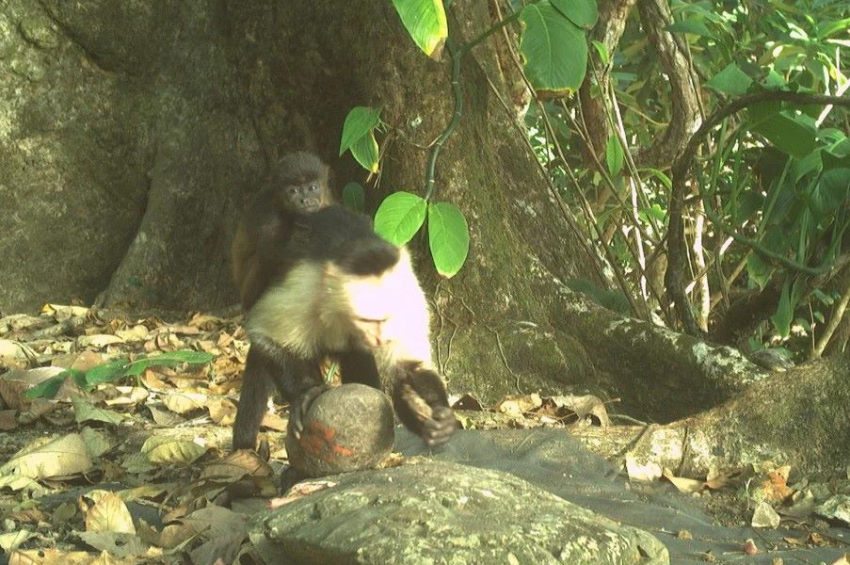Male capuchin monkeys on Jicarón Island are kidnapping baby howlers (and let them die)
A puzzling pattern of interspecies infant abductions among capuchin monkeys on Panama’s Jicarón Island appears to be driven by an unexpected culprit: boredom. Researchers believe the lack of predators and stimulation has led young male capuchins to engage in disturbing “cultural” behavior — kidnapping baby howler monkeys without clear purpose or benefit.
During wildlife observations on the island, behavioral ecologist Zoë Goldsborough, a doctoral student with the Max Planck Institute and University of Konstanz, noticed that a small figure on the back of a white-faced capuchin monkey, nicknamed Joker, thinking she saw a baby capuchin in her camera trap footage.
But after a closer look she realized that the figure’s coloration was different.
More to read:
[video] Sharing tools sheds light on learning and evolution. The case of chimpanzees
After analyzing multiple videos with her research collaborators, they identified the baby monkey as belonging to a different species — howler. They also noticed other male capuchins doing the same thing.
Using 15 months of camera-trap footage on Jicarón Island — part of Coiba National Park, 34 miles off the coast of Panama — researchers from the Max Planck Institute of Animal Behavior, University of Konstanz, and Smithsonian Tropical Research Institute documented at least 11 abductions of infant howler monkeys by four subadult and juvenile male capuchins between January 2022 and March 2023.
With no evidence of caregiving, play, or predation, the researchers concluded in a study published in Current Biology that this behavior may be a kind of “cultural fad,” fueled by the island monkeys’ unusual environmental conditions.
More to read:
Among great apes, humans have longer and wider penises
With the island’s rugged, human-free landscape, in-person observation is difficult. Scientists rely on motion-triggered camera traps — which do not capture treetop activity, where howlers spend most of their time, explained Goldsborough, the study’s lead author. As a result, key details about how and why the abductions occur remain elusive.
Initially, researchers thought Joker might have adopted an orphaned howler. But he wasn’t providing care — merely carrying the infant until it died from starvation.
While female primates sometimes adopt or abduct young for maternal reasons, the Jicarón males showed no such intent. Instead, the capuchins carried the howler infants around for days with little interaction.
More to read:
California ground squirrels started hunting voles
Capuchins are naturally curious and destructive. Even on the mainland, they’re known to harass other species and explore their environment in chaotic ways. But on Jicarón, they do so without fear — the island has no natural predators. Isolated, the capuchins evolved differently than their mainland relatives, facing no risks to do stupid things.
With this safety, and no pressure to stick together in groups for protection, the monkeys roam freely — and perhaps, researchers suggest, they get bored. This boredom, especially among juveniles, could be a driving force behind the kidnappings.
The scientists who reviewed the study say understanding this behavior is urgent. The howlers on Jicarón belong to an endangered subspecies, and with mothers giving birth only once every two years, every loss is significant.
More to read:
Chernobyl frogs adapted to high radiation exposure


![[video] Kazakh businessman donates 100 new apartments to ordinary employees](/news_img/2025/05/30/news0_mediu.jpg)



